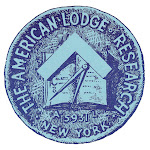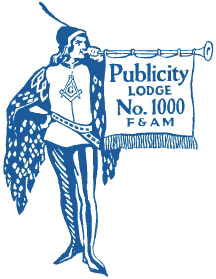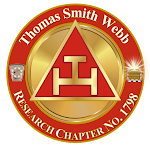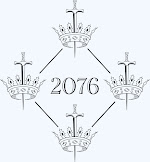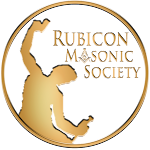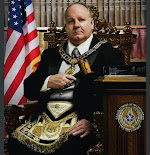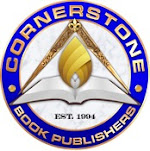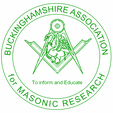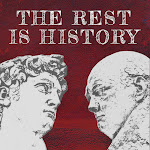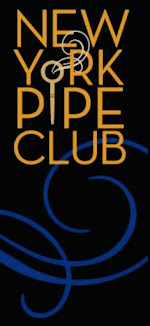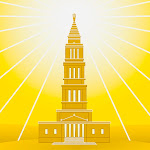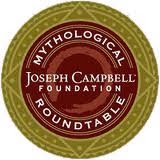Discussion, music, film, literature, tarot, Anthroposophy, Rosicrucianism, BOTA, history, philosophy, psychology, religion, mythology, mindfulness, morality, and more. I provide this list of upcoming events—all but two in Manhattan—gently to suggest to my Masonic brethren that it is okay to hop outside the oblong square of the lodge to enjoy other activities and meet new people. We all know already what is going to happen at your next Masonic meeting. Try something new. Some of these events are free; others are somewhat costly; all are worth a thinking adult’s time. Try one.
Tuesday, October 21—“Masonic Ideals: The Magic Flute” discussion at the Metropolitan Opera House. Click here.
Wednesday, October 22—“Let God in the Room: The Music and Spirituality of Jack White” is the latest evening of Ancient Currents at Aish Center’s Center for Arts Education. 7 p.m. at 266 West 37th Street, ninth floor, in Manhattan. Enter on the Eighth Avenue side. Admission is free. Pizza will be served. Click here.
If you are over forty, Jack White’s name may not mean anything, but if for no other reason than his generous rescue of the Detroit Masonic Temple from the Sheriff’s auction last year, you should know of him.
“Join Rabbi Adam Jacobs on Wednesday evening for Ancient Currents, a weekly series that explores current events and popular culture through the lens (and long memory) of classical Judaism.
Gain insight into what’s going on now in our world, and walk away with valuable lessons on how to navigate the trends and take inspiration from an old perspective on the news.”
Saturday, October 25—Builders of the Adytum to meet at 10 a.m. in Masonic Hall (71 West 23rd Street, Manhattan) on the 12th floor for its monthly “The Elements in Tarot and Hebrew” study.
Saturday, October 25—“Drinking from the Haunted Well: A Mystical Exploration of the Fairy Land of A.E. Waite” presented by Stuart Südekum. Catland Books in Brooklyn. $15 admission (or $7 with fairy or Victorian costume). 5:30 to 8 p.m.
 |
| Courtesy Stuart Südekum |
Waite carried this secret kingdom in his heart throughout his life, even into his late, post-Golden Dawn work.
Stuart Südekum will serve as a mystical tour guide to this forgotten realm, exploring how Waite’s fiction, drama, and poetry can be used to better understand the challenging concepts we encounter in his non-fiction works.
A delicious tea will be served.
Saturday, October 25—The C.G. Jung Foundation will present “The Experience of the Divine/Sacred after the Death of God: Jung and the Quest for an Individuated Spirituality,” a daylong workshop (10 a.m. to 4 p.m.) led by Donald R. Ferrell, Ph.D. and Joanna Mintzer, MA. 28 East 39th Street in Manhattan. Click here.
“Friedrich Nietzsche’s 19th century declaration of the Death of God has had a profound influence upon the intellectual and psycho-spiritual life of Western culture. C.G. Jung emerged from his early encounter with Nietzsche deeply aware that the dominant God image of the three great monotheisms of the West was in decline. Jung understood that with that decline the spiritual lives of Western peoples were in crisis. This workshop will explore Jung’s contribution to the quest for a spirituality brought forth from the loss of soul and the death of meaning. It will also explore post-Jungians, philosophers, and theologians who continue that quest in our time. Through presentations and discussion, we will seek to explore that essential Jungian question: What can the divine and sacred mean for us today?”
Monday, October 27—The New York Mythology Group (the NYC Roundtable of the Joseph Campbell Foundation) will meet in the Mann Library of the C.G. Jung Institute to discuss reading assignment “Archaic Man” by Dr. Jung. 28 East 39th Street in Manhattan. 6:15 to 8 p.m.
This essay is from Collected Works, Vol. 10, Civilization in Transition, from the Bollingen Series and can also be found in Modern Man in Search of a Soul.
“Primitive man is no more logical or illogical than we are. His presuppositions are not the same as ours, and that is what distinguishes him from us. His thinking and his conduct are based on assumptions other than our own. To all that is in any way out of the ordinary and that therefore disturbs, frightens, or astonishes him, he ascribes what we should call a supernatural origin. For him, of course, these things are not supernatural; on the contrary, they belong to his world of experience(s).”
C.G. Jung
Modern Man in Search of a Soul
Owen Barfield
|
Owen A. Barfield: lives near London and is a practicing oil-painter and healer.
 |
| Courtesy The New Victory |
Sunday, November 2—“Drinking from the Haunted Well: A Mystical Exploration of the Fairy Land of A.E. Waite” presented by Stuart Südekum. Hosted by GnosticNYC at the Center for Remembering and Sharing, 123 Fourth Avenue, second floor, in Manhattan. Admission: $10 suggested donation. 2 p.m.
Scroll up to October 25 to see program details.
Friday, November 7—The Rosicrucian Order will screen a motion picture every Friday night in November and December at the Rosicrucian Cultural Center, located at 2303 Adam Clayton Powell, Jr. Boulevard. 6:30 p.m. This evening: Groundhog Day, not uncommonly called “the most spiritual movie of our time.”
 |
| Courtesy Columbia Pictures Corp. |
Yes, we all have seen it, but if you view this movie as just another Bill Murray comedy, you are missing the point. The late Harold Ramis, director and co-writer, had something very meaningful in mind.
Wednesday, November 12—Tarot scholar Robert M. Place to host “An Afternoon of Tarot History at the Metropolitan Museum of Art” from 2 to 4:45 p.m. In an e-mail last week, Mr. Place told me there were four (4) places remaining—cost $70 per person in advance, NOT including the cost of admission to the museum—but I don’t know where that stands now. Contact him at alchemicaltarot(at)aol(dot)com.
 |
| Queen of Flowers playing card. |
Friday, November 14—The Rosicrucian Order will screen a motion picture every Friday night in November and December at the Rosicrucian Cultural Center, located at 2303 Adam Clayton Powell, Jr. Boulevard. 6:30 p.m. This evening: Spring, Summer, Fall, Winter...and Spring.
Sunday, November 16—The School of Practical Philosophy offers the irresistible “Plato Study Day: Socrates on Trial.” 12 East 79th Street in Manhattan. 9 a.m. to 4 p.m. $35 per person, which covers study materials, refreshments, catered Greek luncheon and, at four o’clock, a wine reception.
 “Join us as we follow Socrates’ defense—one that is no apology at all, but a tribute to living life dedicated to the care of the soul, discovery of wisdom, and fidelity to truth. Enjoy the power of group study as we engage in a thoughtful conversation about the meaning of Socrates’ life and teachings. Reserve now, as space is limited.
“Join us as we follow Socrates’ defense—one that is no apology at all, but a tribute to living life dedicated to the care of the soul, discovery of wisdom, and fidelity to truth. Enjoy the power of group study as we engage in a thoughtful conversation about the meaning of Socrates’ life and teachings. Reserve now, as space is limited.“No prior knowledge of Plato is required.”
Click here to register.
Friday, November 21—The Rosicrucian Order will screen a motion picture every Friday night in November and December at the Rosicrucian Cultural Center, located at 2303 Adam Clayton Powell, Jr. Boulevard. 6:30 p.m. This evening: The Matrix.
Monday, November 24— The New York Mythology Group (the NYC Roundtable of the Joseph Campbell Foundation) will meet in the Mann Library of the C.G. Jung Institute to discuss reading assignment “Ancient Myths and Modern Man” by Joseph L. Henderson. 28 East 39th Street in Manhattan. 6:15 to 8:30 p.m. This is the second essay in the pages of Man and His Symbols.
Friday, November 28—The Rosicrucian Order will screen a motion picture every Friday night in November and December at the Rosicrucian Cultural Center, located at 2303 Adam Clayton Powell, Jr. Boulevard. 6:30 p.m. This evening: The Last Mimzy.
Saturday, November 29—H. Spencer Lewis Pronaos of the Rosicrucian Order will host Julie Scott, Grand Master of the English Grand Lodge for the Americas at its Nutley, New Jersey meeting place (175 Chestnut Street). I will share more details when they are available.
Wednesdays, December 3, 10, and 17—Tarot historian Robert Place returns to New York City for three nights at New York Open Center to present “An Introduction to the Tarot: Guidance and Wisdom for Our Spiritual Journey.” 8 to 10 p.m. NY Open Center is located at 22 East 30th Street.
“The Tarot, ostensibly a deck of decorated cards, is in fact a symbolic system whose images express Pythagorean, Platonic and Hermetic mystical ideas. Once one grasps the Tarot’s philosophy and structure, the cards can be used as an intuitive device to connect with one’s inner wisdom. In this class we will study the symbolism of the Tarot as its Italian Renaissance creators intended, come to understand its spiritual messages, and then learn and practice techniques that develop our intuition and enable us to read the cards as messages from our Higher Self. Note: Bring a Tarot deck (Waite-Smith or one of Robert Place’s decks) and some unlined paper.”
Click here for registration info.
Saturday, December 6—The C.G. Jung Foundation will present “The Many Faces of Loneliness,” a daylong workshop (10 a.m. to 4 p.m.) led by Heide M. Kolb. 28 East 39th Street in Manhattan. Click here.
he becomes lonely.”
Loneliness is one of the most prevalent ailments and complaints in our time. We live in a culture that pathologizes the need for solitude while clinging to the belief that interpersonal relationships are indispensable for a fulfilled life. Yet even if we accept that the tolerance of solitude is a necessity for human development, loneliness remains a source of terrible suffering for many.
 |
| Automat by Edward Hopper, oil on canvas, 1927. |
While this workshop can stand on its own, it is also a continuation of a previously offered seminar of the same title. We will continue to explore the meaning and possible purpose of loneliness through a Jungian lens. While we will never lose sight of the potentially transformative aspect of loneliness, we will particularly focus on how to make sense and how to engage the often unbearable suffering of loneliness when all seems dead and lost and nothing and no one seems to be there.
Participants are encouraged to bring a journal.





